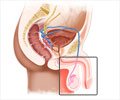Cell-free DNA analysis of maternal plasma is easy ,non- invasive and highly effective in detecting fetal chromosomal and genetic abnormalities in antenatal mothers
- Cell-free DNA (cfDNA) analysis is a non-invasive prenatal screening test that can detect chromosomal abnormalities in a fetus
- The test involves analyzing the DNA fragments present in the mother's blood, which are thought to come from the placenta
- The test can also detect certain sex chromosome abnormalities and be used to determine the sex of the fetus with high accuracy
Read More..
Women's Health: Racial and Ethnic Health Inequities
Go to source). The technology can also detect other genetic abnormalities, such as sex chromosome anomalies and microdeletions.
Benefits of Cell-Free DNA Analysis
Cell-free DNA analysis has several benefits over traditional prenatal testing methods. Firstly, the test is non-invasive and does not carry the risk of miscarriage or fetal injury. Secondly, the test can be performed as early as 10 weeks of gestation, which allows for early detection of fetal abnormalities. Thirdly, the test has a high accuracy rate, which reduces the need for further invasive testing methods, such as or chorionic villus sampling.Detection of Common Genetic Disorders and Chromosomal Abnormalities
Perinatal screening for genetic disorders is important because early detection can lead to early intervention, which can improve the outcome of the pregnancy. Common genetic disorders detected perinatally include Down syndrome, Edwards syndrome, and Patau syndrome.Down syndrome, also known as trisomy 21, is a chromosomal abnormality caused by an extra copy of chromosome 21. Down syndrome is associated with intellectual disability, heart defects, and other health problems. According to the Centers for Disease Control and Prevention (CDC), the prevalence of Down syndrome in the United States is approximately 1 in every 700 births (2✔ ✔Trusted Source
Data and Statistics on Down Syndrome
Go to source).
Edwards syndrome, also known as trisomy 18, is a chromosomal abnormality caused by an extra copy of chromosome 18. Edwards syndrome is associated with severe intellectual disability, congenital heart defects, and other health problems. The prevalence of Edwards syndrome is approximately 1 in every 5,000 live births.
Patau syndrome, also known as trisomy 13, is a chromosomal abnormality caused by an extra copy of chromosome 13. Patau syndrome is associated with severe intellectual disability, congenital heart defects, and other health problems. The prevalence of Patau syndrome is approximately 1 in every 10,000 live births.
Cell-free DNA testing has a high detection accuracy rate for common fetal chromosomal abnormalities, such as trisomy 21, trisomy 18, and trisomy 13. In a meta-analysis of 31 studies that included a total of 88,677 pregnancies, the detection rates for these three chromosomal abnormalities were as follows: 99.2% for trisomy 21, 97.4% for trisomy 18, and 92.5% for trisomy 13 (3✔ ✔Trusted Source
Analysis of cell-free DNA in maternal blood in screening for fetal aneuploidies: updated meta-analysis
Go to source).
References :
- Women's Health: Racial and Ethnic Health Inequities - (https://www.ncbi.nlm.nih.gov/pmc/articles/PMC3833574/)
- Data and Statistics on Down Syndrome - (https://www.cdc.gov/ncbddd/birthdefects/downsyndrome/data.html)
- Analysis of cell-free DNA in maternal blood in screening for fetal aneuploidies: updated meta-analysis - (https://obgyn.onlinelibrary.wiley.com/doi/10.1002/uog.14791)















